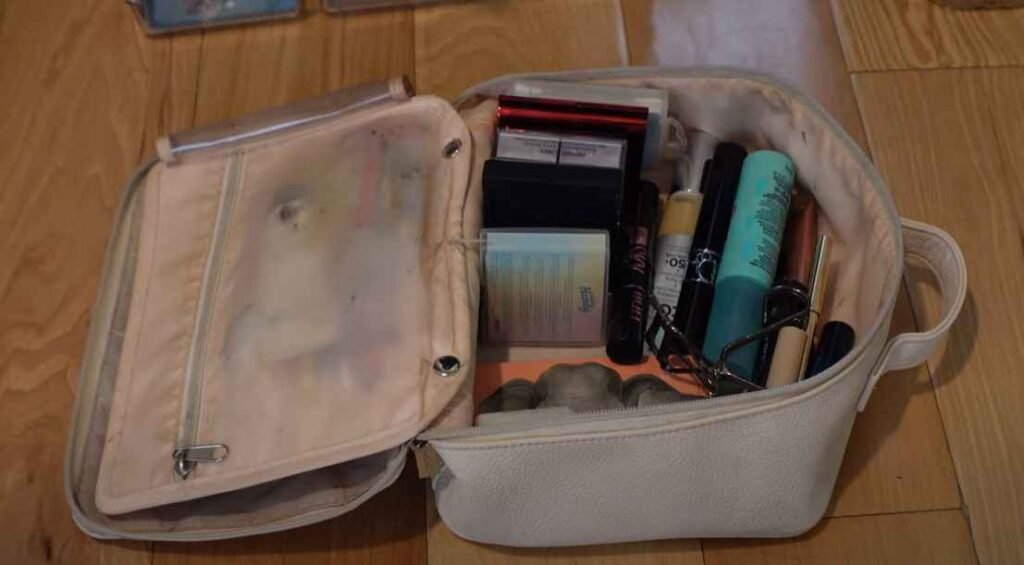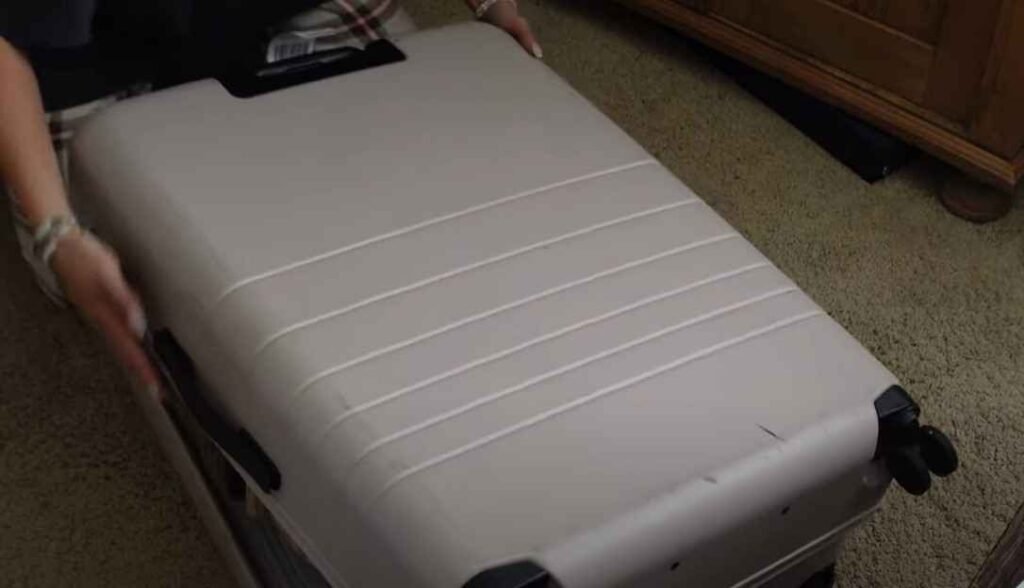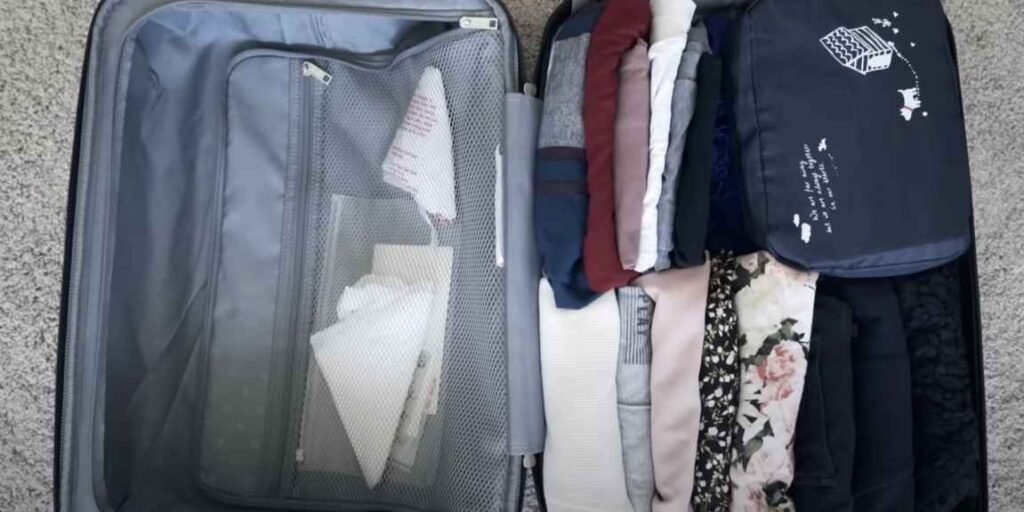The time it takes to pack a suitcase varies greatly, typically between 30 minutes to 2 hours. The duration depends on the individual’s efficiency, the length of the trip, and the items required.
Packing a suitcase is an essential task for travelers and can be a skillful art for the frequent flyer. The process involves selecting the right clothing and accessories, folding them efficiently, and organizing everything to maximize space. A seasoned traveler might pack quickly, getting the job done in half an hour.
On the other hand, someone preparing for an extended vacation or facing packing dilemmas may need a couple of hours to ensure nothing is forgotten. With the right checklist and some planning, packing doesn’t have to be a time-consuming ordeal.
The key is to start with a clear list of necessities and to pack methodically to prevent last-minute rushes and forgotten items. This approach not only saves time but also helps reduce stress, making the start of your journey as smooth as possible.
I will provide a suggestion about “How Long Does It Take to Pack a Suitcase?”
Table of Contents
Toggle- Introduction To Packing A Suitcase
- Determining The Purpose Of Your Trip
- Suitcase Packing Strategies
- Time-saving Packing Tips
- Clothing Considerations
- Gathering And Preparing To Pack
- Packing Gadgets And Electronics
- Handling Toiletries And Liquids
- Finalizing Your Packing
- Average Time Estimates
- Conclusion: Customizing Your Packing Timeline
- Frequently Asked Questions On How Long Does It Take To Pack A Suitcase
- Conclusion
Introduction To Packing A Suitcase

Packing a suitcase seems straightforward, but it’s an art all its own. It starts with a plan and ends with a zipped bag, ready for adventure. Everyone’s approach to packing is different, and the time it takes can vary widely. The mechanics help streamline the process.
Comprehension The Packing Process
The packing process involves more than tossing items into a bag. It’s a sequence of decisions about what to take. Here’s what typically happens:
- Selecting clothes and items based on the destination and length of the trip.
- Folding or rolling clothing to maximize space and reduce wrinkles.
- Arrange items efficiently to make use of every inch.
Factors Influencing Packing Time
Why does packing time differ? Many factors come into play. These include:
| Factor | Impact on Packing Time |
|---|---|
| Experience | Seasoned travelers pack faster than novices. |
| Destinations | Varied climates or occasions require more thought. |
| Organization | Keeping items tidy speeds up the process. |
| Decision Making | Quick choices save time. |
Determining The Purpose Of Your Trip

Before diving into your suitcase, step back to think: what’s the trip for? Your luggage contents will shift dramatically based on the why and where of your journey. Whether it’s business, relaxation, or adventure, your goal drives your packing list. Here’s how to align your packing efforts with your trip’s purpose:
Travel Duration And Packing Needs
Packing for two days differs vastly from a two-week excursion. Short trips require essentials; longer stays mean more variety and quantity. Start by listing out day-to-day needs, then adjust for your trip length:
- Weekend Getaway: Stick to the basics – a few outfits, one pair of versatile shoes, and minimal toiletries.
- Extended Vacation: Plan for laundry access and mix-and-match clothing to keep your suitcase manageable.
Considerations For Various Destinations
Packing for a beach trip is not the same as gearing up for a mountain hike. Every destination has its packing strategy:
| Destination Type | Essential Items |
|---|---|
| Beach | Swimwear, sunblock, sandals |
| City | Comfortable walking shoes, day-to-night outfits, city guide |
| Mountains | Layered clothing, hiking boots, weather gear |
Suitcase Packing Strategies

Embarking on a trip often starts with a simple yet daunting task: packing a suitcase. A well-packed suitcase sets the tone for a hassle-free journey. Finding the perfect balance between packing light and ensuring you have everything you need is an art. Sharpen your packing skills with strategic methods designed to save time and space.
List-making: Organizing Your Essentials
Begin your packing process with a master list. This list ensures no toothbrush or charger gets left behind. Categorize your items to streamline packing:
- Clothing – Sorted by day, activity, or weather.
- Toiletries – Sized for travel, grouped by use.
- Gadgets – With corresponding chargers and accessories.
- Important documents – Passports, tickets, and reservations.
Tick off items as they go into the suitcase. This method prevents overpacking and ensures quick retrieval of your essentials upon arrival.
Packing Methods: Rolling Vs. Folding
Maximize suitcase space with efficient packing techniques. Evaluate two popular methods:
| Rolling | Folding |
|---|---|
| Minimizes wrinkles | Keeps clothes structured |
| Saves space | Stacks easily |
| Great for casual wear | Preferred for formal attire |
Choose to roll for a casual wardrobe. It’s a space-saver and your clothes arrive with fewer creases. Fold formal wear for a neat, orderly suitcase layout. Some choose to combine both methods. Roll your jeans and T-shirts. Fold dress shirts and pants.
Placing rolled items at the bottom lays a foundation. Folded items go on top for a tidy finish. Packing cubes offer another layer of organization. They group similar items and can leverage both rolling and folding within their confines.
Time-saving Packing Tips
Getting ready for a trip often involves packing a suitcase, a task that can be time-consuming without the right approach. Smart packing isn’t just about what you pack, but how you pack. Time-saving packing tips can streamline the process.
They ensure everything fits well and remains accessible. The aim is to make packing quicker and more efficient so you can focus on the excitement of your journey.
Using Packing Cubes
Packing cubes transform suitcase chaos into tidy compartments. They allow for clear organization and quick access to your belongings.
- Sort your clothes by category and assign each to a cube.
- Roll or fold garments to maximize space and reduce wrinkles.
- Compress the cubes to fit more into your suitcase.
Benefits: Time spent digging through your suitcase decreases dramatically. Packing and unpacking become tasks that take just minutes.
Choosing A Functional Suitcase
The right suitcase acts as a base for efficient packing. Functional features save time and reduce hassle during travel.
| Feature | Benefit |
|---|---|
| Multiple compartments | Easy segregation of items |
| Expandable sides | Flexibility for extra purchases |
| Sturdy wheels | Smooth mobility |
| Retractable handle | Comfortable maneuvering |
Opt for a suitcase with these characteristics. Time at airports and hotels becomes stress-free. Your packing routine becomes effortless.
Clothing Considerations

Packing a suitcase calls for strategic planning, especially when it comes to clothing. It’s a delicate balance between having enough outfits and overpacking. To make the process easier and more efficient, focusing on clothing considerations is key. We delve into selecting flexible apparel and tailoring your wardrobe to the climate and activities that can streamline your packing.
Selecting Multipurpose Garments
Choosing clothes that work in different settings is a smart move. These pieces not only save space but also offer versatility for various occasions.
- Neutral colors mix and match easily.
- Opt for clothes that transition from day to night.
- Layerable items offer more combinations.
- Focus on durability and comfort.
Accounting For Weather And Activities
Keep an eye on the forecast and plan accordingly. Ensure your travel wardrobe matches the predicted weather and planned events.
| Weather/Activity Type | Suggested Clothing |
|---|---|
| Sunny and Warm | Light fabrics, hats, sunglasses |
| Cold Climates | Insulated layers, gloves, warm hats |
| Outdoor Adventures | Moisture-wicking fabrics, sturdy footwear |
Remember, always pack staple items suited for unexpected plans.
Gathering And Preparing To Pack
Wondering how long it takes to pack a suitcase? It starts with gathering and preparing. Smart packing leads to a stress-free journey. Before placing the first item in your suitcase, a bit of planning is key. Let’s immerse into the process of assembling items and checking regulations to ensure your suitcase packs a punch without any hitches.
Assembling Items Pre-packing
Organizing your essentials is the first step to packing quickly. Create a list of items relevant to your destination’s climate and planned activities. This list prevents forgetting key pieces and speeds up the packing process.
- Clothes – Match them with your itinerary.
- Toiletries – Size them according to travel guidelines.
- Gadgets – Include chargers and adaptors.
Consider versatile outfit combinations. Choose layers that work together and can mix and match. This optimizes suitcase space and ensures you’re ready for any occasion.
Checking Luggage Regulations
Know your airline’s luggage policy to avoid last-minute panics. Weight limits and size restrictions vary, so check these details early. Here’s how:
- Visit your airline’s website for specifications.
- Review restrictions for carry-ons and checked bags.
- Note prohibited items to ensure a smooth security check.
Ensure your suitcase complies with these regulations. It saves you excess baggage fees and repacking at the airport.
| Airline | Carry-on Size Limit | Checked Baggage Weight Limit |
|---|---|---|
| Example Airline 1 | 22″ x 14″ x 9″ | 50lbs / 23kg |
| Example Airline 2 | 24″ x 16″ x 10″ | 55lbs / 25kg |
With items assembled and luggage regulations cleared, you’re now set for the actual packing. Remember, an organized approach is the quickest path to a well-packed suitcase.
Packing Gadgets And Electronics

Packing gadgets and electronics is a critical part of getting ready for a trip. Smartphones, tablets, cameras, and laptops add fun and functionality to travel. Yet, they need special attention to arrive in top condition. Follow these tips to pack them right.
Protecting Fragile Items
Electronics are delicate. Keep them safe from shocks and scratches. Begin with proper cases or sleeves for laptops and tablets. Use padded pockets in your luggage for extra security. Remember that a hardshell suitcase offers better protection for fragile items.
- Smartphone: Use a sturdy case and a screen protector.
- Camera: Pack in a specialized padded bag or wrap with microfiber cloths.
- Laptops/Tablets: Slip into a sleeve. Place in the middle of your suitcase, cushioned by clothing.
Managing Cables And Chargers
Prevent tangles and damage by organizing cables and chargers. Use cord organizers or separate pouches to keep them neat. Label each cable with a tag to identify it quickly. Roll up cords loosely to avoid strain on wires.
| Electronics | Organization Tip |
|---|---|
| Chargers | Store in a single pouch |
| Cables | Secure with Velcro strips |
| Earphones | Coil and stow in a small case |
Backup batteries and power banks also require care. Charge them fully before leaving. Pack them in a place you can easily access.
Handling Toiletries And Liquids

Stepping away from clothes and shoes, let’s dive into the world of toiletries and liquids. These items often cause headaches if not packed correctly. Grasping, how to pack them can save space and prevent messy accidents.
Avoiding Spills With Proper Packing
Prevent leaks and spills in your suitcase with careful packing. Here are some tips to keep your belongings safe:
- Double-seal liquids using plastic wrap.
- Place items in zip-lock bags.
- Opt for travel-sized containers to save space.
- Utilize specialized travel toiletry bags with compartments.
Keeping toiletries snug and secure ensures your clothes remain clean.
Navigating TSA Liquid Rules
When flying, TSA regulations on liquids must be followed. Remember these rules:
| Liquid Limit | Container Size | In One Clear Bag |
|---|---|---|
| 3.4 ounces (100ml) per item | Travel-sized containers | Quart-sized zip-lock bag |
Stay within limits to avoid hold-ups. Pre-pack your liquids for security checks.
Finalizing Your Packing
As the journey draws near, the art of packing reaches its final act. Finalizing your suitcase matters as much as starting it. Smart packers know this phase seals the deal for a stress-free travel experience. Let’s ensure your luggage is field-ready with a couple of smart steps!
Performing A Final Checklist
With essentials in place, a final rundown is pivotal. This checklist guarantees nothing gets left behind. Cross-reference your items with the list created at the start.
- Travel documents – Passport, tickets, and maps.
- Gadgets – Phone, camera, and chargers.
- Toiletries – Toothbrush, deodorant, and small shampoo.
- Clothes – Ensure all outfits are present and packed neatly.
- Miscellaneous – Books, snacks, and first-aid kit.
Double-check each category. Tick each item off your list as you confirm its presence. Peace of mind comes from thoroughness.
Leaving Room For Souvenirs
Remember, return journeys often come with extras. Leaving space for souvenirs is a must. Gifts and mementos will need a home for the trip back.
| Tip | Description |
|---|---|
| Compression Bags | Use compression bags to reduce clothing bulk. |
| Packing Cubes | Allot one cube for future purchases. |
| Flexible Spaces | Leave pockets and corners empty for small items. |
Dedicate a pouch or a small bag for souvenirs from the get-go. You’ll avoid the hassle of reorganizing or, worse, having to leave treasures behind.
Average Time Estimates
Embarking on a journey brings the inevitable question: how long does it take to pack a suitcase? The truth lies in an individual’s packing habits. Average time estimates can help travelers plan accordingly. Preparation time varies widely, yet certain patterns emerge among different traveler types.
Comparison Based On Traveler Type
Striking differences exist in packing times among various travelers. Look at the following breakdown to gauge where you might fall.
| Traveler Type | Average Packing Time |
|---|---|
| Business Travelers | 30 minutes to 1 hour |
| Vacationers | 1 to 2 hours |
| Backpackers | 2 to 3 hours |
| Overthinkers | 3+ hours |
For instance, business travelers often have a go-to system, making their process swift. Vacationers may indulge in more leisurely packing, ensuring nothing’s missed. Backpackers prioritize essentials, balancing weight and need. Overthinkers may pack, unpack, and repack for peace of mind.
Impact Of Last-minute Packing
Last-minute packing can significantly alter these times. It often leads to hurried decisions and possibly forgetting important items.
- Stress levels increase, impacting overall prep time.
- Packing speed may rise, but efficiency could fall.
- Key items might get left behind due to haste.
Planning allows for a relaxed, methodical approach, keeping packing times within average estimates. Start early to ensure a smooth departure.
Conclusion: Customizing Your Packing Timeline
Packing a suitcase varies greatly from person to person. It’s a personal journey. Identify what works best for you. Your timeline will depend on your packing style, destination, and travel needs. To get it just right, consider the following customizable approaches.
Personalizing The Packing Experience
Tailor your packing process to fit your unique needs and lifestyle. Consider these points:
- Know your itinerary: Plan outfits and essentials accordingly.
- Check the weather: Ensure your clothes match the forecast.
- Make a list: Keep track of must-haves to avoid forgetting anything.
- Start early: Give yourself plenty of time to pack without stress.
- Use packing aids: Organizers can streamline the process.
Adjusting Expectations For Future Travels
Gather insights from each trip to make future packing smoother.
| Past Experience | Future Adjustment |
|---|---|
| Overpacked | Limit items to essentials |
| Forgot items | Refine packing list |
| Stressful packing | Start earlier |
Reflect on previous trips. Remember what you didn’t use. Cut down on similar items next time. Embrace a minimalist approach for hassle-free travel.
Frequently Asked Questions On How Long Does It Take To Pack A Suitcase
What Is The 5 4 3 2 1 Packing List?
The 5 4 3 2 1 packing list is a guideline suggesting packing: 5 sets of socks and underwear, 4 tops, 3 bottoms, 2 pairs of shoes, and 1 hat.
How Long Before A Trip Should You Start Packing?
Start packing for your trip at least one week in advance to ensure a stress-free preparation process.
How Long Does It Take To Pack For A One Month Trip?
Packing for a one-month trip typically takes 5-6 hours, varying with individual speed and organization level. Start early to ensure a smooth process and avoid last-minute stress.
Can You Pack In 2 Hours?
Yes, you can pack in 2 hours by prioritizing essentials, using checklists, and staying organized. Quick packing is achievable with focus and pre-planning.
Conclusion
Packing a suitcase is a personal process, influenced by various factors. With the right techniques and organization, it can be done efficiently. Remember, starting early and having a checklist can be game-changers. Now that you’re armed with these insights, packing need not be a time-consuming ordeal.
Happy travels and smooth packing!



